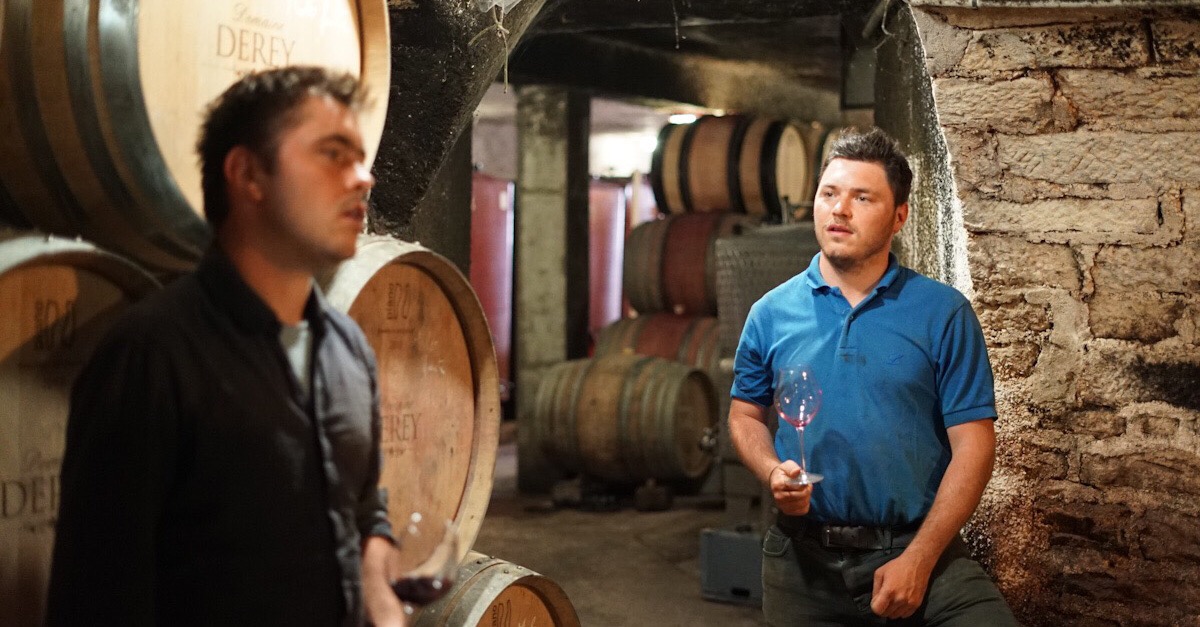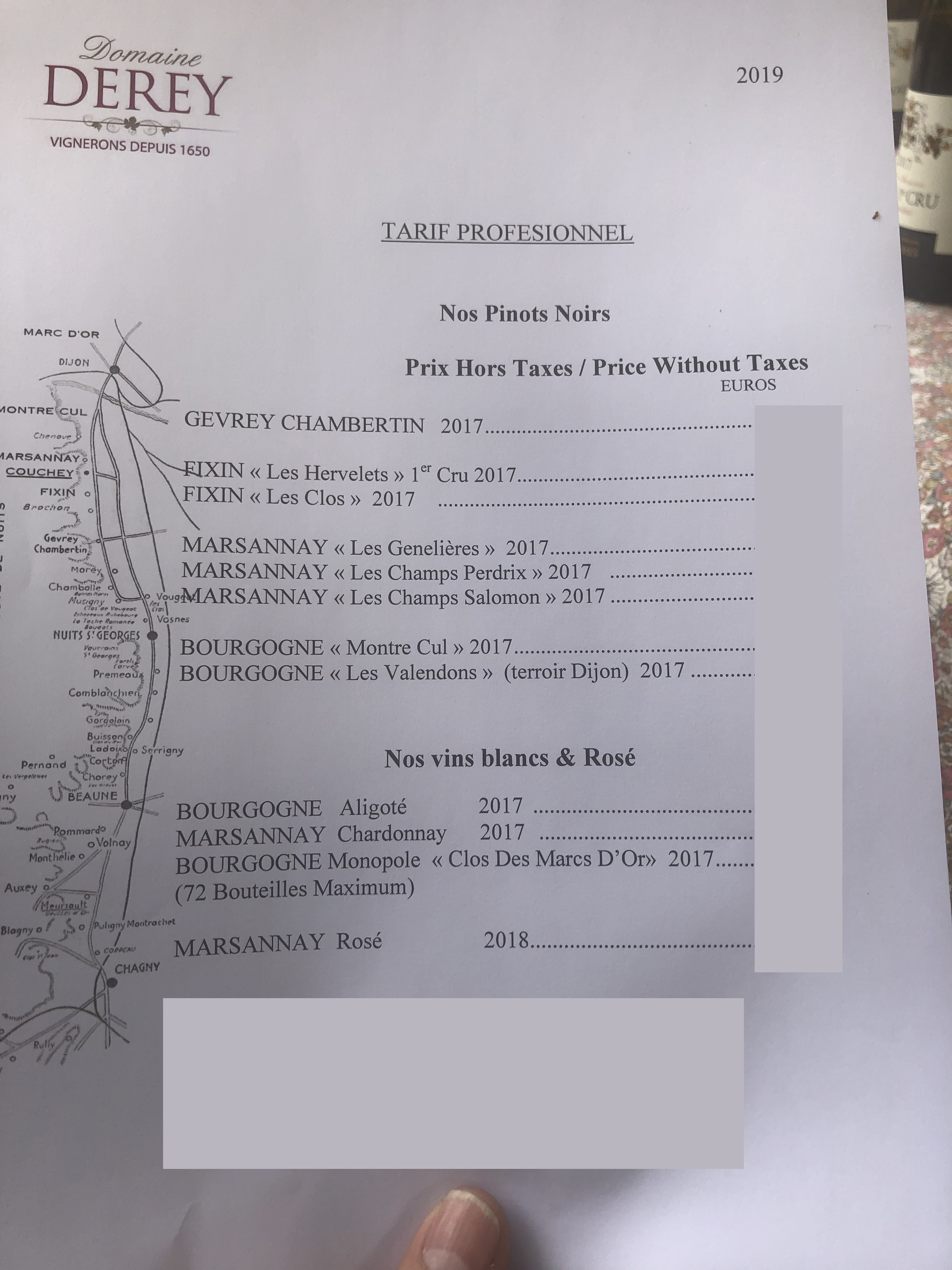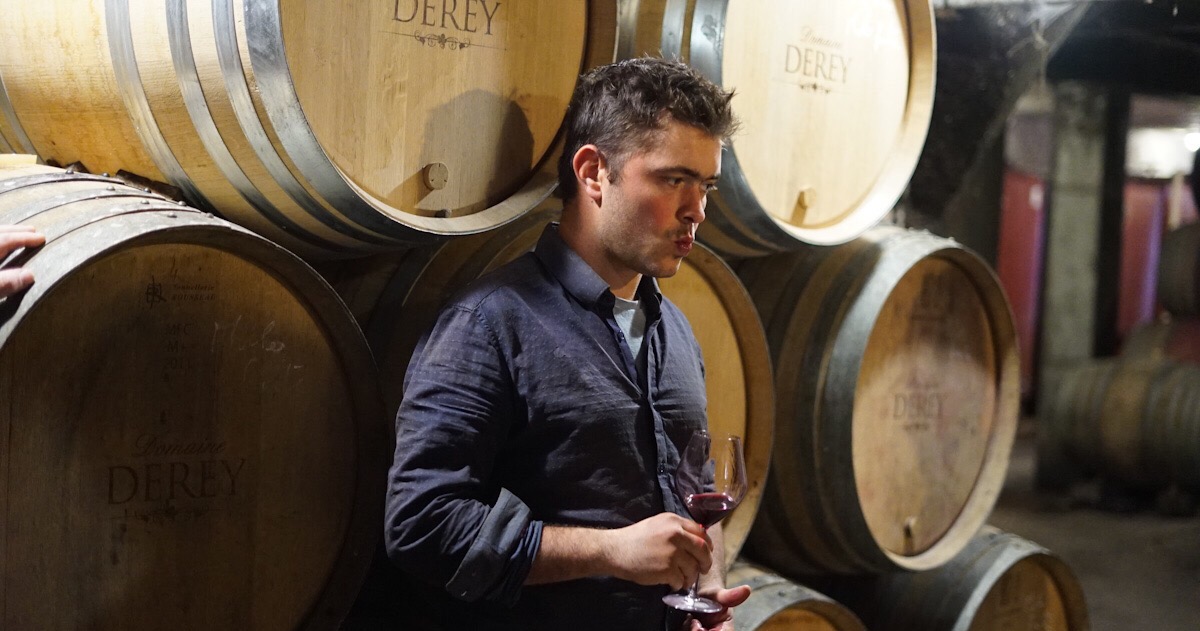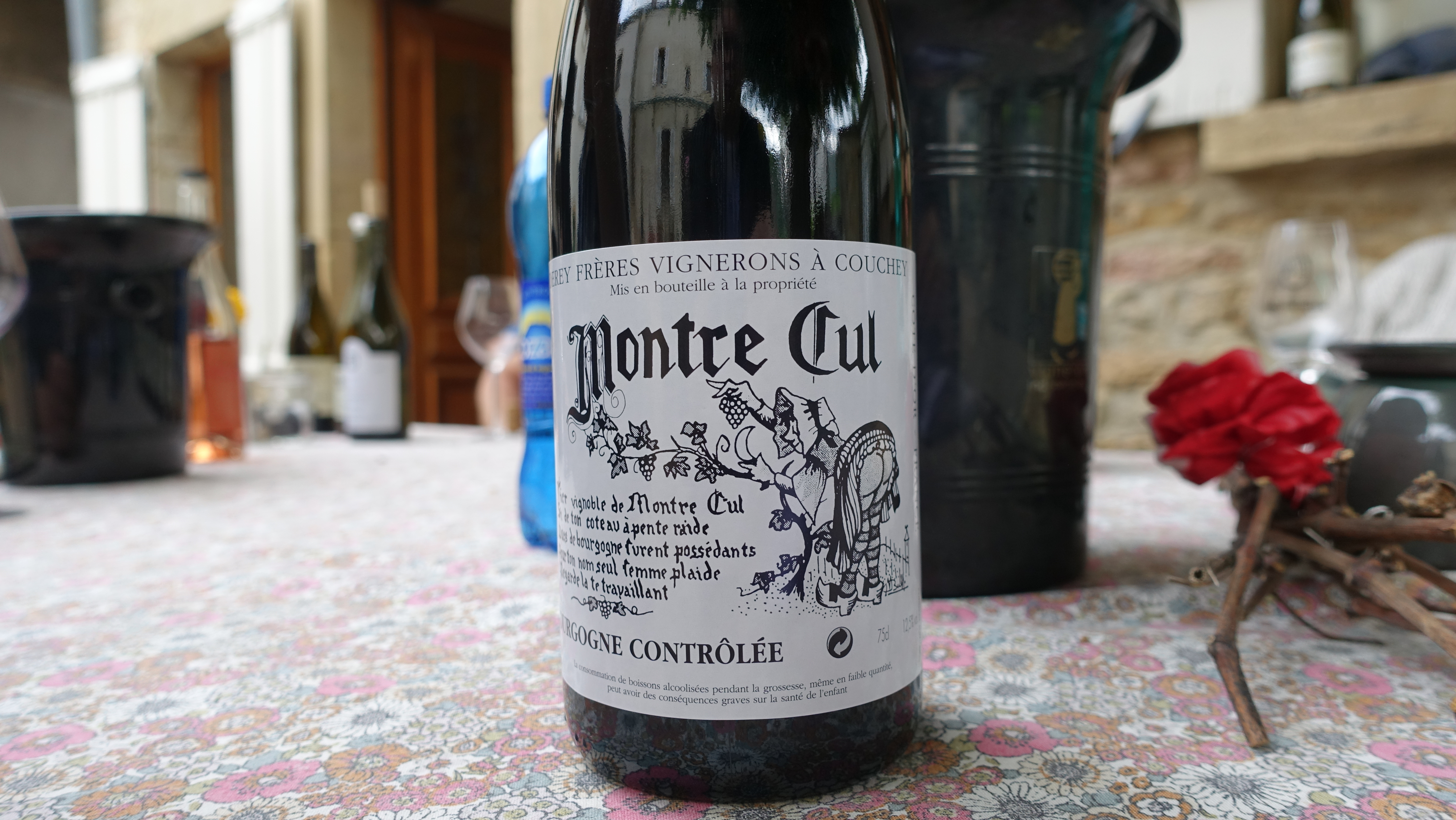I like to visit new estates and also to explore lesser-known villages. One could easily call Couchey a lesser-known village, as it is sold under the name of its better-known neighbour, Marsannay.
Couchey is located just north of Fixin and south of Marsannay – and in this village we find Domaine Derey, an old estate founded back in 1650.
Domaine Derey is a true family business: the parents Pierre and Suzanne run the estate with their three sons, Maxime, Romain and Pierre-Marie Derey.
Let’s go to Couchey!
The vineyards of a Couchey estate
The estates of Couchey are closely linked to the surrounding villages and the AOC Marsannay. As the Derey website says … “the vineyard comprises some 20 hectares in the communes of Dijon (some of the few true Dijon vines), Marsannay-la-Côte, Fixin, Couchey and Gevrey-Chambertin.”
Translated into bottlings, that is more or less it – with Montre Cul, Les Valendons and Bourgogne Clos des Marcs d’Or coming from the Dijon appellation.
The approach to Marsannay and northern Burgundy
Let’s face it: Burgundy drinkers in Denmark – and apparently many other countries – are very conservative, and keep their focus firmly on better-known appellations like Gevrey-Chambertin, Chambolle-Musigny and Vosne-Romanée.
It is hard to inspire collectors to shift their focus towards new horizons. But perhaps things are changing with the ever-increasing prices of the more famous appellations.
In Denmark, one of the first changes was the wines from Blair Pethel at Domaine Dublère, who succeeded in introducing wines from Savigny-les-Beaune to the Danish culinary scene. With his elegant wines, he sort of paved the way for others.
It is indeed a complex market, and producers perhaps need to rethink their marketing strategy, as climate change does offer new possibilities and markets for lesser-known – but reasonably priced – appellations.
The main challenge is bringing to market not only high-quality, but drinkable wines – i.e. wines that have high drinkability within the first five years, knowing that this is when most of them will be drunk.
There is, however, a big difference in perception between Vosne-Romanée and Marsannay; selling a Vosne wine that will require cellaring is expected and accepted (while many nonetheless drink it very young). Selling a Marsannay is a different proposition, as most consumers don’t buy these wines for cellaring – they buy them for near-term consumption.
These wines are for a large part drunk very early, and have little or no prospect of being cellared for 15 years – unless they remain unsold and are therefore still in a merchant’s inventory.
The clue here is to make drinkable – but still complex and enjoyable – wines, like the ones one could get from the likes of Domaine Dublère.
This is the challenge for Domaine Derey.
Tasting the wines of Domaine Derey
I have selected a number of wines from the tasting of the 2018s at Domaine Derey, to explore their range.
The first is Clos des Marcs d’Or (Monopole) blanc 2018, a Dijon wine from a vineyard just on the border with Dijon. This is a terrific, interesting white with a lovely mineral note – reminding me a bit of Domaine de la Cras from Marc Soyard. It is a vibrant wine with stony minerality. The nose is quite cool for the vintage – with the crunchy mineral note maintaining the freshness. This is a very appealing terroir – one of the gems of Dijon.
(Drink From 2020) – Good (87 – 88p) – Tasted 24/05/2019
—-
Next up is one of my Dijon favourites, Bourgogne Montre Cul rouge 2018. This cuvée includes 50% whole clusters, and is quite a forward and expressive wine with very good concentration thanks to the rich vintage. The nose is almost organic – stemmy from 50% whole cluster – with hints of cinnamon and allspice on the nose. On the palate, an elegant mouth feel; vivid, relatively openly knit with plenty of juicy fruit. This is quite enjoyable – and one will always have the saucy label!
(Drink From 2020) – Good (85 – 87p) – Tasted 24/05/2019
The Marsannay Les Champs Perdrix 2018 is clearly a step up, and includes 50% whole-cluster grapes. This is perhaps slightly on the hot side, but with fine energy and nice balance. Twenty percent new oak provides a nice structural component that balances the generous fruit. Nice mineral equilibrium in this cuvée.
(Drink From 2025) – Good (85 – 87p) – Tasted 24/05/2019
—-
Marsannay Les Géneliéres 2018 is a further step up the quality ladder – this is showing very well. This vineyard is located in the northern part of Couchey, but still in the Marsannay appellation. This is a rich and generous wine with a slightly hot note, yet well balanced and intense. It is from old vines – 60-70 years – and 80% whole-cluster fermentation gives this wine delightful body, with cinnamon and allspice giving a fine spicy tone.
(Drink From 2024) – Good+ (86 – 88p) – Tasted 24/05/2019
—-
Moving up to Gevrey-Chambertin Craite Paille Vieilles Vignes 2018 from a village terroir located below La Justice, near the train station in Gevrey. This steps up again quality-wise, with a quite strong mineral note. The bouquet is classic, with notes of cherry, blackberry and blackcurrant. It’s quite floral, vivid and spicy. On the palate, nice intensity and energy. It seems like the Gevrey appellations have produced some delightful wines in 2018.
(Drink From 2025) – Very Good (88 – 89p) – Tasted 24/05/2019
—-
The top wine is the Fixin Les Hervelets – the neighbouring vineyard to Les Arvelets – a 1er cru located above the village of Fixin. It’s an intense and concentrated wine – 2018 is not the vintage for lightweight wines – with nice energy and freshness from its 60% whole-cluster vinification. It’s quite powerful – lovely notes of cherries and blackcurrant – and very refined and forward.
(Drink From 2025) – Good+ (87 – 89p) – Tasted 24/05/2019
—-
Domaine Derey … the evaluation
In general, the wines presented here are showing very well, and all have lovely drinkability. The range is a bit variable – with the different levels of whole cluster ratio accounting for at lot of this.
For me, the wines with a higher share of whole cluster seem to work best, giving the most forward and drinkable wines (one man’s opinion).
In general, I like the rare Dijon terroirs – and the price points on these wines are very interesting. With some of the other appellations it may be more complicated, as the competition is intense.
Bottom line: Lots of talent at Domaine Derey, and the vineyard portfolio has fine potential.





 - A true vin d’émotion – a Burgundy of passion
- A true vin d’émotion – a Burgundy of passion - A truly hedonistic wine – lively and enjoyable
- A truly hedonistic wine – lively and enjoyable - A vivacious wine for pure indulgance
- A vivacious wine for pure indulgance - A potential vin d´émotion - frais et léger
- A potential vin d´émotion - frais et léger
Leave a Reply
You must be logged in to post a comment.